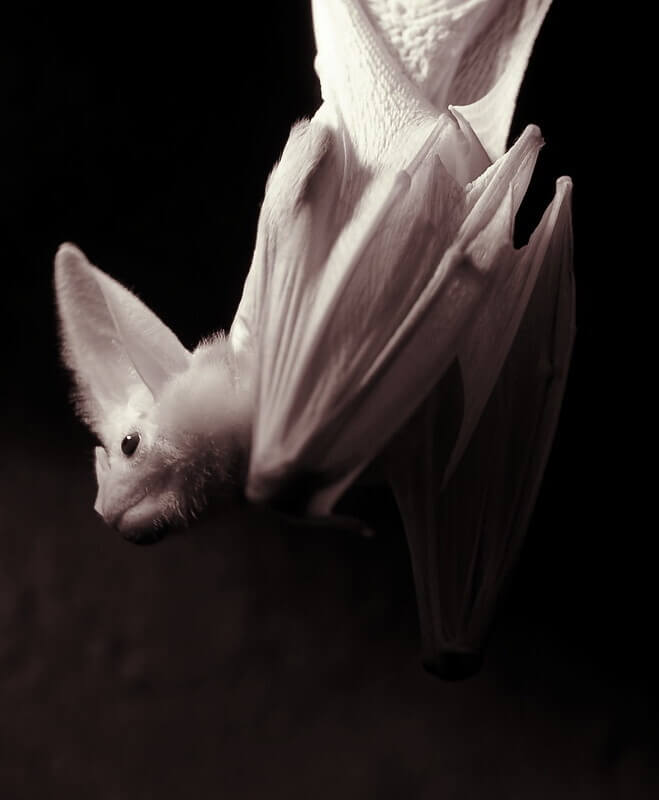The Northern Territory’s tropical savanna is home to tiny bats that can fit snugly in the palm of your hand.
Ghost bats were once found across Australia – but due to widespread habitat destruction – they're now believed to be found only in sparse pockets of Queensland, Western Australia and the Northern Territory.
On a pastoral station more than 200 km from Darwin, these tiny Ghost Bats fly through the night sky at great speed in search of insects, reptiles, and frogs.
Claravale Station is home to sweeping orange plains, savannah woodlands, the banks of the beautiful Daly River, and interconnected limestone caves.
Ghost bats live hidden in some of these caves with their babies (known as pups). One of only five confirmed maternity roosts for ghost bats in the whole of the Territory is found at Claravale Station.
Along with ghost bats, the station is believed to be home to other threatened species, including water monitors, Gouldian finches, red goshawks, partridge pigeons, pale field rats, Victoria River Squat Snails, and rare bladderworts.
But the Top End Pastoral Company wants to destroy this habitat by bulldozing 5800 hectares of native savanna woodland at the Claravale property.

Landmark prosecution
Our client, the Environment Centre Northern Territory, has kept pressure up on the Northern Territory government to investigate allegations of illegal land clearing at Claravale Station.
Allegations of illegal land clearing at Claravale were first uncovered by the 7.30 Report at the start of 2023, with evidence that tropical savanna had been cleared without a valid permit.
In a landmark move, the NT Government announced in January that it has commenced legal action over the alleged unlawful land clearing.
It's believed to be the first time any such action has been taken by a government in the NT's history.
This matters because land clearing for cotton and industrial agriculture has skyrocketed across the Northern Territory – much of it without proper oversight or scrutiny.
More bulldozing planned
Instead of backing down after facing prosecution, Top End Pastoral Company has now applied to bulldoze 5800 hectares of savannah.
In January 2024, the owners applied to clear more than 1900 hectares, with an application to bulldoze a further 3850 hectares lodged in February.
The February application states that the proposed clearing is three kilometres from a sacred site and 700 metres from a ghost bat record.
But the owners have tried to avoid public scrutiny and haven’t even referred the land clearing for assessment under our federal environment laws.
It doesn’t have to be this way. Under our federal environment laws, Environment Minister Tanya Plibersek has the power to step in and prohibit land clearing that threatens endangered plants and animals likes ghost bats and Gouldian finches.
Rampant deforestation in the Territory
Rampant deforestation in the TerritoryThe Northern Territory is the only jurisdiction in the country with no specific native vegetation laws and no overarching biodiversity conservation strategy to protect ecosystems already collapsing.
From 2019-2022, land approved for clearing in the Territory surged by around 300%.
The vast majority of broadscale land clearing is occurring on pastoral leases, which make up approximately 45% of land in the NT.
This leaves cute and unique wildlife like Ghost Bats on the brink of extinction.

"Our laws are meant to protect Australia’s most threatened wildlife. But too often, these laws are not applied or even enforced.
Too often we see pastoralists 'self-assess’ their own land clearing plans, destroying habitat and sending more native wildlife to the brink of extinction."
EJA Lawyer Laura Dreyfus
How you can help
As we’ve done with Lee Point, we will keep working with our clients and scrutinising and challenging land clearing permits across the Territory.
You can donate to power game-changing court cases to save Australia's threatened wildlife – and the habitat they call home.
Your donations help us run bold, public interest cases to increase protection for threatened species and their habitat.

